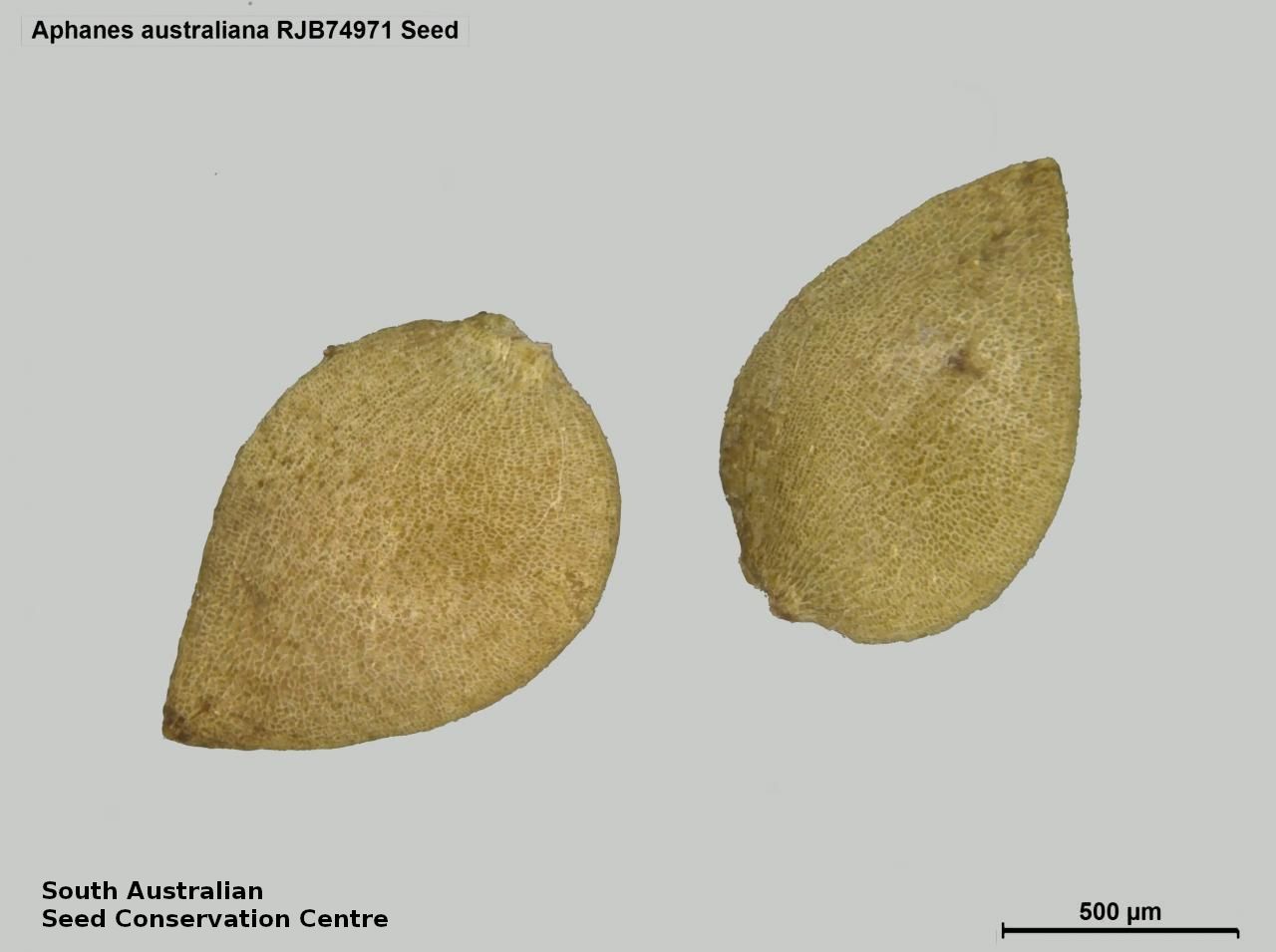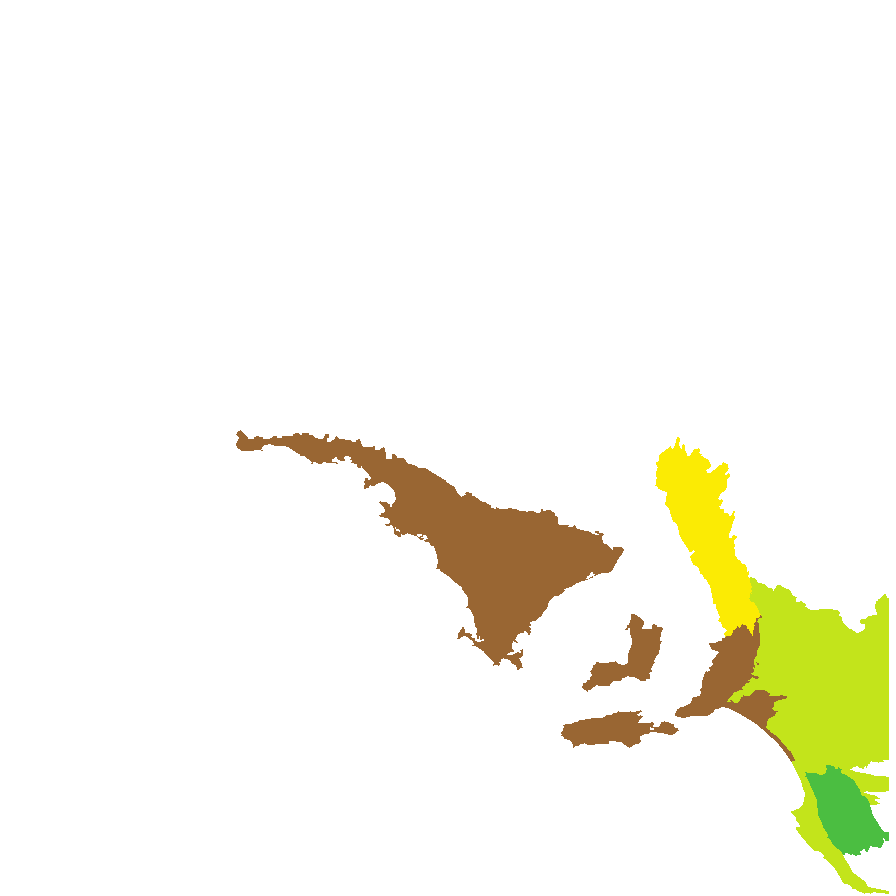












Botanical art
Prior names
Alchemilla australiana
Alchemilla arvensis
Etymology
Aphanes from the Greek 'aphanes' meaning invisible. Australiana from the Latin 'australis' meaning southern, referring to the species distribution in the southern part of Australia.
Distribution and status
Found in the southern part of South Australia, growing in drier open eucalypt woodland and mallee woodland. Also found in New South Wales, Victoria and Tasmania. Native. Common in South Australia. Common in the other States.
Herbarium regions: Flinders Ranges, Eyre Peninsula, Northern Lofty, Murray, Yorke Peninsula, Southern Lofty, Kangaroo Island, South Eastern, Green Adelaide
NRM regions: Adelaide and Mount Lofty Ranges, Eyre Peninsula, Kangaroo Island, Northern and Yorke, South Australian Arid Lands, South Australian Murray-Darling Basin, South East
AVH map: SA distribution map (external link)
Plant description
Small, greenish, often sparsely hairy herb with stems usually erect to 6 cm. Leaves fan-shaped, divided into 3 segments, each divided into 3-5 lobes. Inflorescence in clusters of 5–7 yellowish green flowers. Flowering between August and November. Fruits are brown or reddish brown capsule to 2 mm long, slightly constricted at the neck; covered in scattered short hairs. Seeds are small pale brown, ovoid seed to 1.3 mm long and 0.8 mm wide.
Seed collection and propagation
Collect seeds between October and January. Collect whole plant with fruits drying off and turning brown. Place the plants in a tray and leave to dry for 1-2 weeks. Then rub the dried plants to dislodge the seeds. Pass the material through a sieve to separate the unwanted material. The finer material will contain both seeds (soft) and frass (hard) usually distinguishable from each other. With finer sieves, the seeds can be separated from the frass but this is not essential for storage or propagation. Store the seeds with a desiccant such as dried silica beads or dry rice, in an air tight container in a cool and dry place. From two collections, the seed viability was high, ranging from 80% to 100%.
| Location | No. of seeds (weight grams) | Number of plants | Date collected | Collection number Collection location | Date stored | % Viability | Storage temperature |
|---|---|---|---|---|---|---|---|
| BGA MSB | 7,000 (2.02 g) 7,000 (2.02 g) | 50 | 21-Nov-2007 | RJB74971 South Eastern | 19-Sep-2008 | 100% | -18°C |
| BGA | 5,200 (1.18 g) | 20 | 1-Nov-2007 | RJB74641 Southern Lofty | 19-Sep-2008 | 80% | -18°C |
Number of plants: This is the number of plants from which the seeds were collected.
Collection location: The Herbarium of South Australia's region name.
% Viability: Percentage of filled healthy seeds determined by a cut test or x-ray.